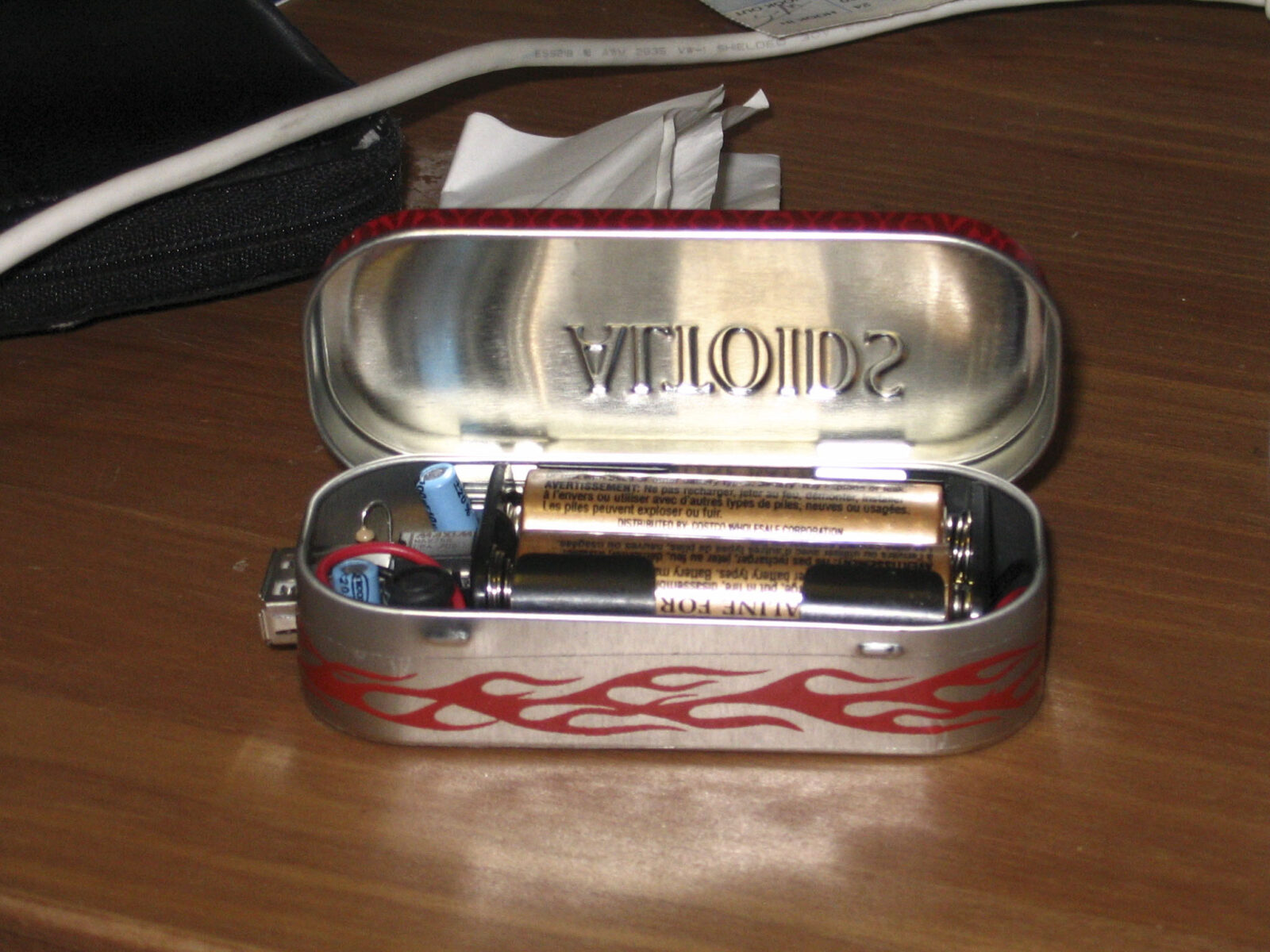
During last week’s ride, I hit the limits of my GPS‘ ten to eleven hours of internal battery capacity. So, with it officially being spring, when young minds turn to thoughts of riding more, it seemed to be a good time to build the Minty Boost kit I received for Christmas.
The Minty Boost is a DC/DC converter that lets one power (or, in this case, charge) an USB-powered devices with a pair of AA batteries. On iPods, it’s equivalent to 1 1/2 full recharges. Just doing the back-of-the-envelope, on the GPS this could mean another 18 hours of power. (If I’m doing the back-of-the-envelope correctly, an 80% conversion efficiency should power the GPS’ 3.7V, 910mAh[5] battery for 17 hours on a fresh pair of 2000 mAh batteries.)
As with Mitch Altman’s[4] brain machine [2] (based on Limor’s MiniPOV [3] kit — POV = Persistence of Vision) and TV-b-Gone (for serene visits to [redacted]), the first task is to inventory. This inevitably brings a wave of nostalgia, for when I was a youngin’, Radio Shack actually sold electronic kits. (Ah, 120-in-1 kit!) Fortunately, in the land of the Internets, there are companies like Mouser and DigiKey that will sell small quantities of parts.
This is always a good opportunity to spool up the soldering iron. When I want it to heat, it takes forever, when it’s accidentally dropped onto the carpet, it heats very quickly.
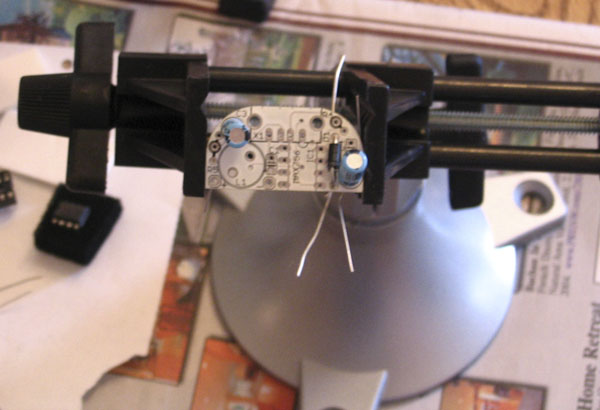
Since doing the previous kits, I’ve been convinced that a vice or third-hand tool would be a nifty addition. I spent a birthday gift card on a small one. No more holding the board with my feet as I solder!
The board’s markings help ensure one doesn’t mess up the polarity on the capacitors or the diode, but I still feel compelled to quadruple check before trimming the leads. Next, came the two other capacitors and the inductor. The inductor made me appreciate having the vice.
Before I could admire my soldering handiwork too much, I came to the part where the USB port was added. The instructions recommended adding a couple of extra blobs of solder on the side of the plub to better hold it on the board. This got a little messy, leaving browned resin on the back. Ugly, but mostly harmless.
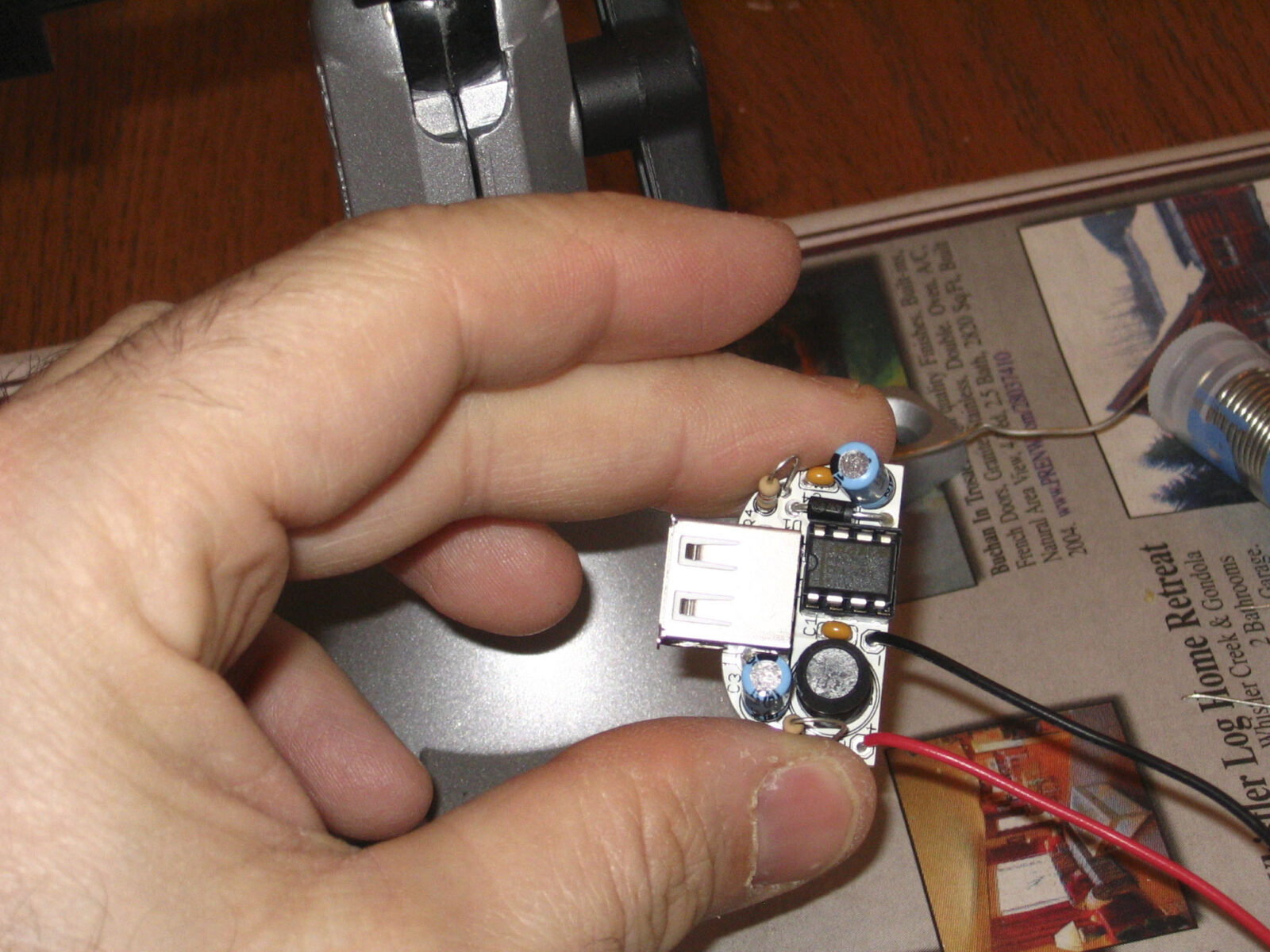
The chip socket came next, and was trickiest component. Its legs were too short to bend to hold it into place, but it was also shorter than the surrounding components. I had to prop the board up cockeyed on a roll of tape to solder one of the eight legs, then move the board to the vice to do the rest.
With the board all soldered, I wanted to plug it into my GPS, but felt that it would be wise to test my work with a voltmeter. I noticed the battery pack read 3.45 volts, which seemed too high. The output, as measured from pins 1 and 4 of the USB port, was 7.7V, waaaaay higher than expected. I checked again, then looked for cold joints. Nothin’. The forums had a few examples where people encountered unexpected output. All of the responses began with “check your voltmeter.”
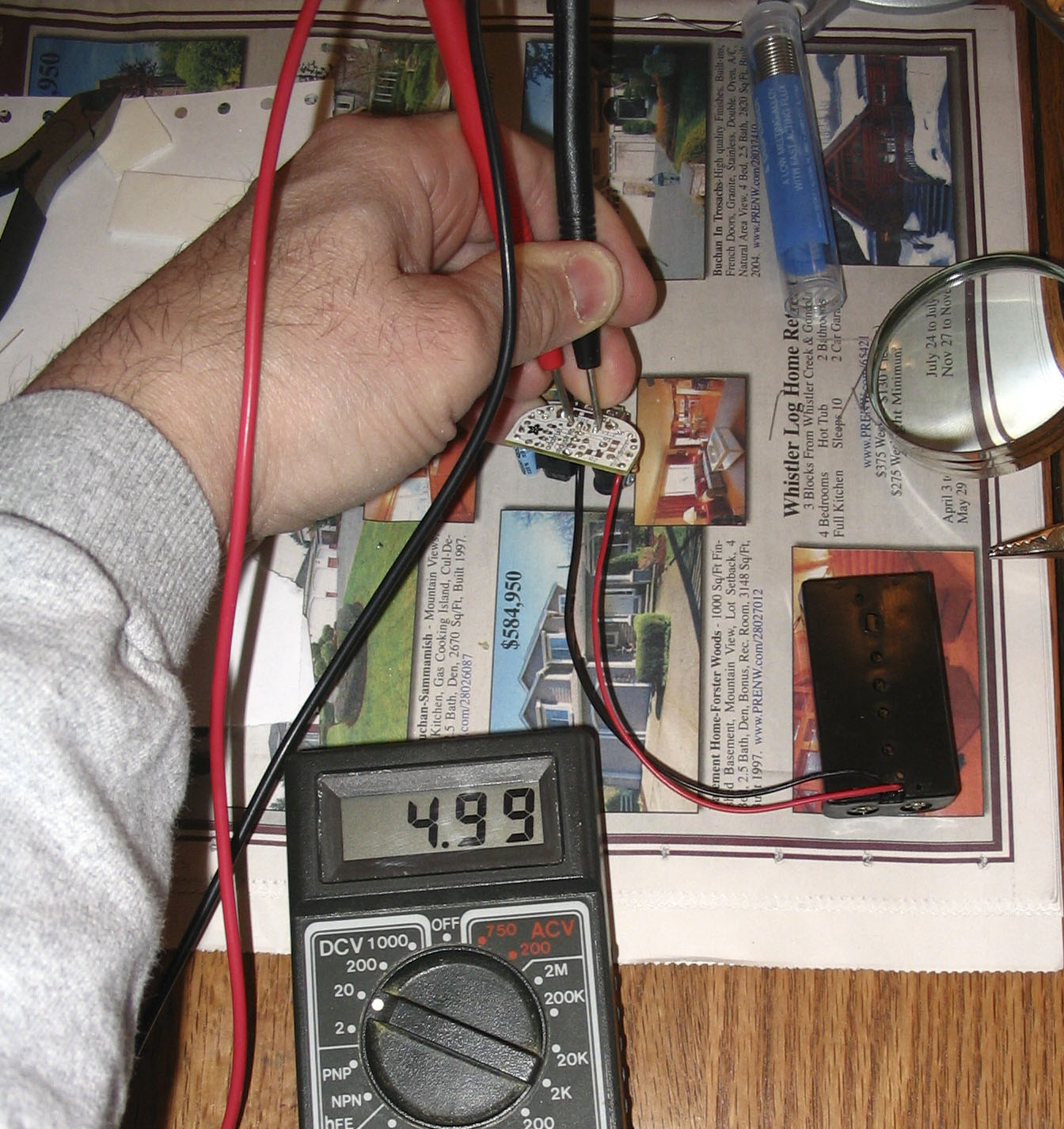
I tried an individual battery: 2.45V. That’s wrong. Next, the household current: 197 VAC. Okay, my voltmeter was definitely wonky. It’s been a while since I’ve used it, so I popped a fresh 9V battery, and lo! It was now reading correct values for the individual battery and the household current. Once again, I tried the circuit’s output: 4.99V. Whew!
Now, the fun part: putting this in a case. I have, literally, a dozen gently-used Altoids gum boxes in a desk drawer. The little metal containers amuse me, especially for projects like this, and I remain optimistic that the Peppermint Gum Fairy will refill them. Thus, I cannot be compelled to throw them out.
I first tried cutting a notch out of the side with snips then bending the metal until it fatigued itself off. This was very awkward, and I could never get the cuts parallel. I tossed out the box and started over, this time with a dremel tool to grind out a hole on the side. Much better. I smoothed out the edges with a pointy, conical bit. Batteries disconnected (for obvious reasons), I tested the fit. Pretty darned close.
I fiddled with which direction to mount the battery pack, finally deciding that I’d just route the wires along the inside, between the holder and the wall of the mint case. I needed a little extra loop around the capacitor to keep it snug, but here’s the final result:
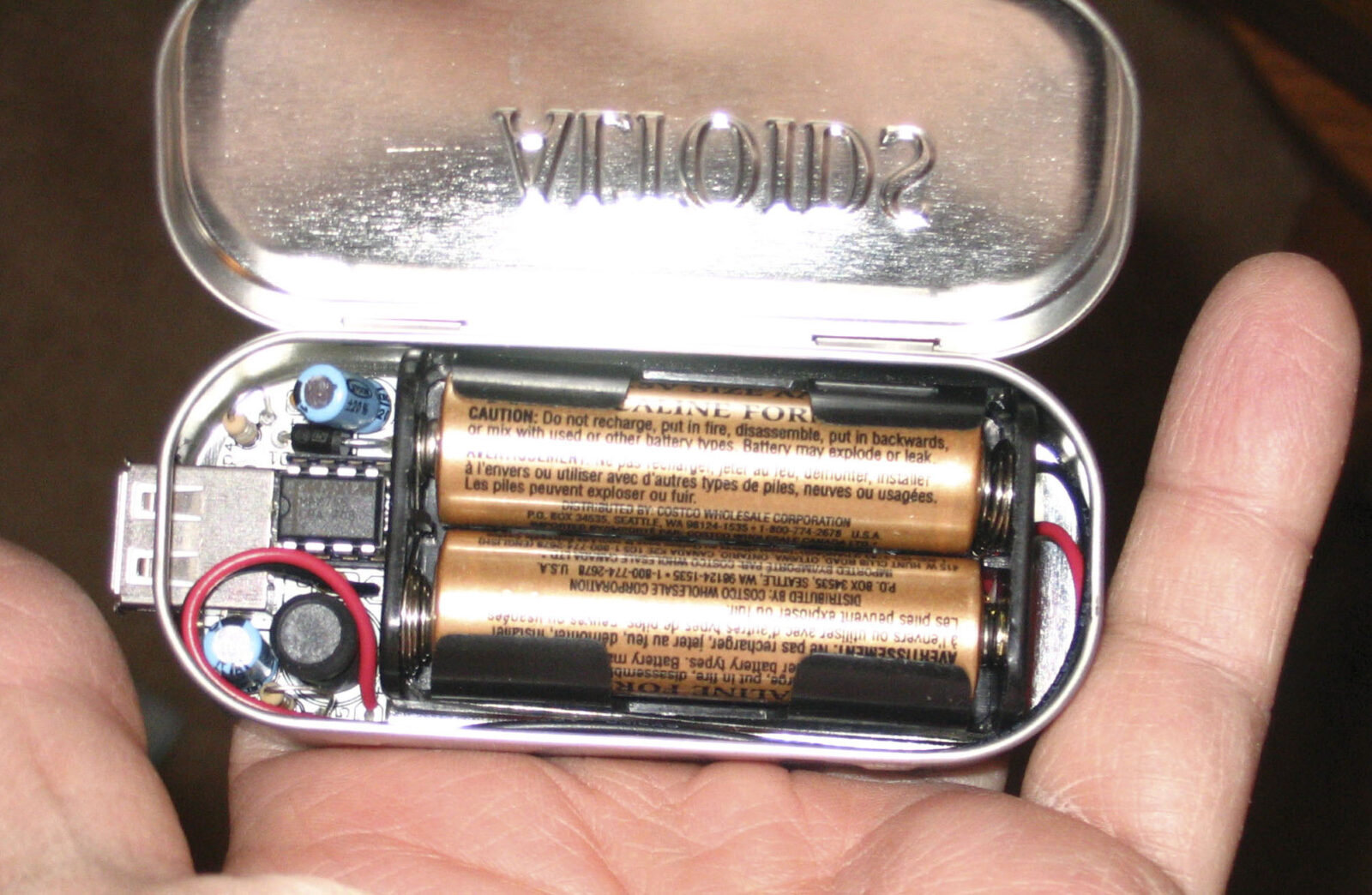
Any bets on how often this will get me selected for a “totally random” TSA-style search?
Update: As Susan rightly pointed out, the case needed a little something:

For more background info, see [6].
Sources:
- [1] Limor discusses the process in designing the kit.
- [2] “Make a Brain Machine,” Make Magazine #10.
- [3] “Mini-POV” kit, Adafruit Industries, used as a basis for the Brain Machine above.
- [4] “TV-b-Gone” kit, Adafruit Industries. An assembled version is available from Mitch Altman’s site, tvbgone.com
- [5] Garmin Edge 305 Owner’s Manual, Garmin
- [6] Tricking out my KitchenAid.
>Any bets on how often this will get me selected for a “totally random” TSA-style search?
I’m sure they are exercising a little “random curiosity” on your passport file right now.
Well done.
No flames decal? I’m very bummed.
(slaps forehead) You’re right. Fixed. Picture here 🙂
And my world is right again. Ahhhhhh
OMG! The flames are absolutely fantastic!!
Now I need a Garmin, so I can justify a flamed minty boost!!!
You, sir, have rocked my world.
That is tres chic!
Scout! Congratulations on your recent milestone – that’s awesome!
You know they sell these, right? LOL
Very nicely done!
Yes, but then I wouldn’t get to build one 🙂